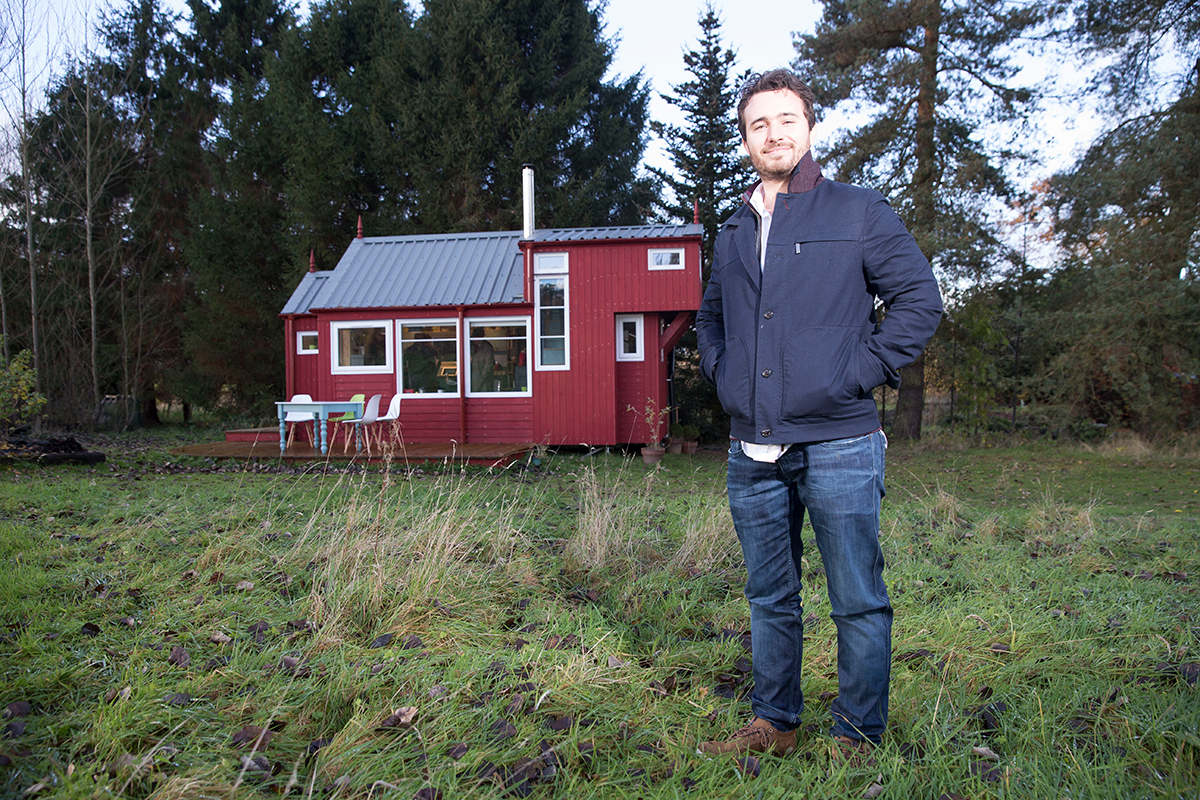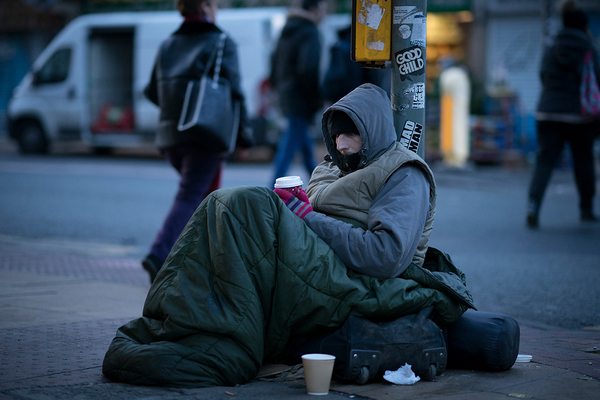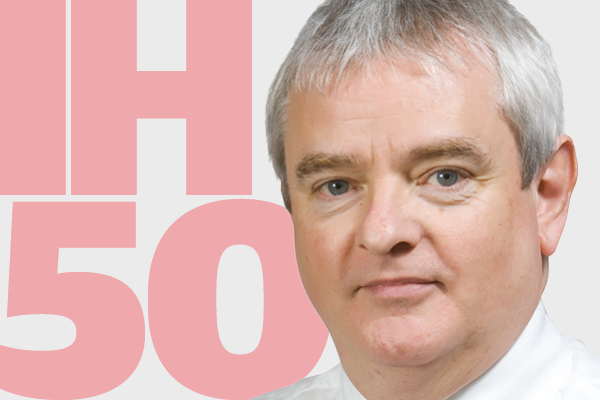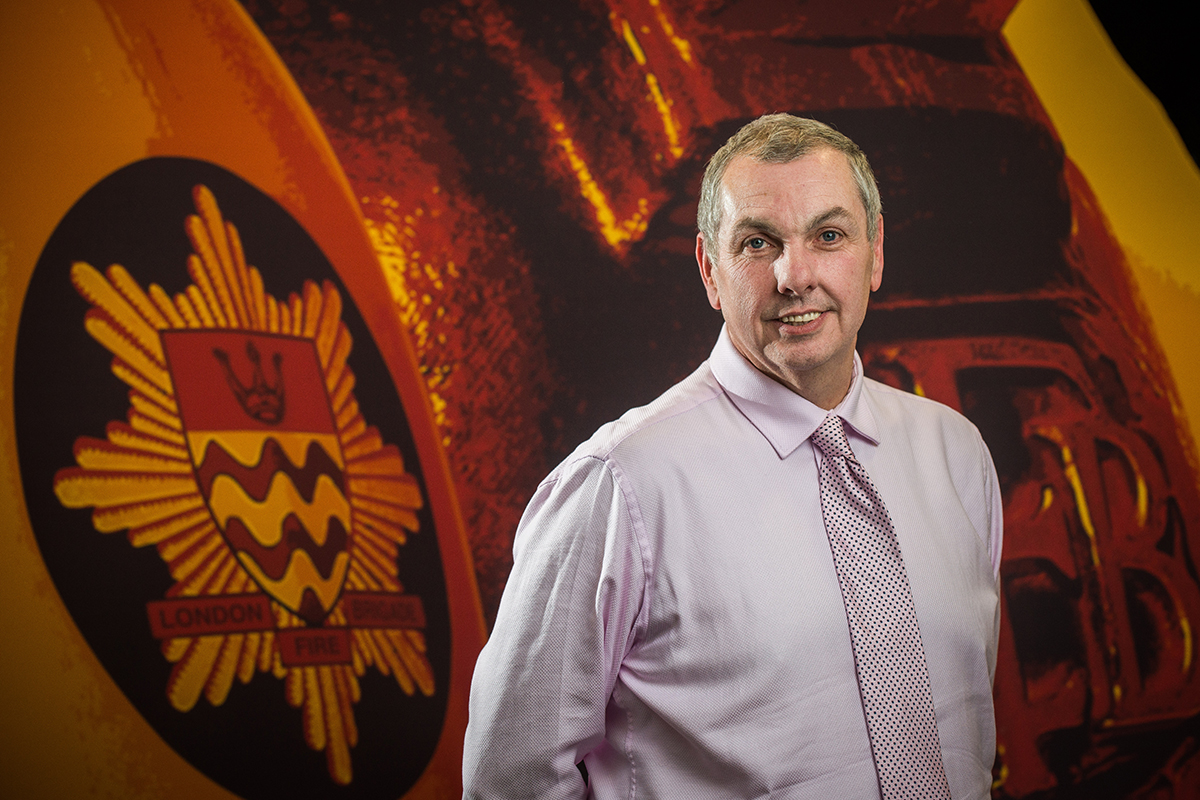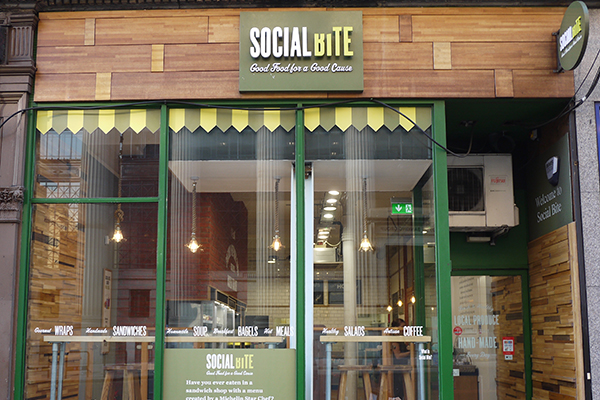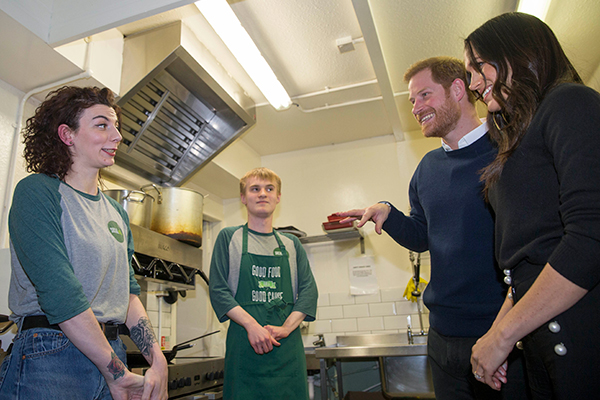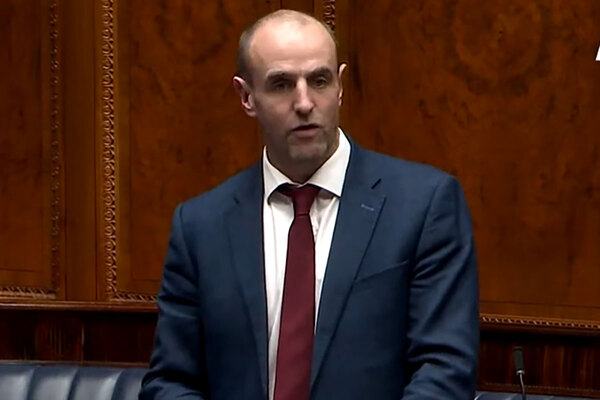You are viewing 1 of your 1 free articles
From serving sandwiches to housing homeless people
Edinburgh café-owner Josh Littlejohn has a plan to tackle homelessness. But can he win over sceptical housing professionals? Michael Lloyd reports. Photography by Jeff Holmes and Frame PR
Josh Littlejohn outside one of the ‘NestHouses’
Away from tourist haunts, Edinburgh can be cold and bleak for homeless people. But a ‘village’ of cosy ‘NestHouses’ looks set to offer Scandinavian-style hygge to 20 of them.
In a revolutionary take on temporary accommodation, 10 small but perfectly formed wooden huts, each sleeping two, are going up on waste ground near a council regeneration project on the banks of the River Forth.
Tenants will move in during April. The groundbreaking initiative was the idea not of Edinburgh’s homelessness prevention team, but a man who runs a sandwich shop in the city centre.
For a crusader against social injustice, Josh Littlejohn comes across as quiet and modest.
But there is no doubting his passion for ending homelessness.
His efforts have been recognised already; he was awarded an MBE in recognition of his service to social enterprise and entrepreneurship in the 2017 New Year’s Honours list.
The 31-year-old made his mark persuading celebrities to back his plans, which included a mass sleep-out in Princes Street Gardens last December.
Eight thousand people attended, hearing music by Liam Gallagher and Deacon Blue, and a bedtime story read by John Cleese. The event raised £2.9m for Mr Littlejohn’s plans.
His mission has been backed by Hollywood stars such as Leonardo DiCaprio and George Clooney, who have both shared a sandwich with homeless people in his café. A couple of weeks ago, Prince Harry and his fiancée Meghan Markle visited.
Although the café always had a social purpose, Mr Littlejohn did not plan to tackle homelessness when he opened his Social Bite sandwich shop on Edinburgh’s Rose Street in August 2012.
His passion was sparked after he gave a job to a Big Issue seller.
This led him to employ other homeless people and listen to their stories. He was appalled by what they told him about their lives in temporary accommodation.
“They are put in B&B [accommodation] with a single bed and kettle. There’s always a time when people have to be out… 10 in the morning and they can’t go back in until 6pm, so they are traipsing the streets all day,” he says. “If they miss any of those curfews they can get kicked out and end up sleeping rough.” Mr Littlejohn thinks this amounts to writing someone off.
Although not all temporary accommodation is this bleak, the regime for young men can be harsh. Research shows it contributes to the mental strains that can tip people over the edge and into rough sleeping. One study by homelessness charity St Mungo’s in February 2016 found that four in 10 rough sleepers have a mental health problem.
At present, the search for a solution is focusing on the Housing First approach.
Housing First seeks to provide long-term, heavily supported housing dispersed in the community, rather than dedicated homelessness accommodation that may be stigmatising.
Mr Littlejohn’s concept appears to turn that principle on its head – he intends to create a self-help community for homeless people in his ‘Social Bite Village’. Inside Housing is backing Housing First as a holistic response for hard-to-help, vulnerable people.
Social Bite sandwich shop
The NestHouses plan met with a sceptical reception from social housing professionals when it was announced.
A homelessness researcher at Edinburgh’s Heriot-Watt University questioned the value of concentrating homeless people in an institutional environment on the edge of the city.
Senior research fellow Dr Beth Watts was quoted in The Times, worrying that the approach conflicted with the evidence “that homeless people should instead be moved directly to permanent accommodation in mainstream neighbourhoods”.
And Kate Polson, chief executive of the Rock Trust, which supports young people in temporary tenancies into employment and long-term housing, wondered what would happen to the village residents if they had not found work by the end of their 18-month maximum stay.
But Mr Littlejohn has listened to his critics. He wants to spend much of the £2.9m raised at the December sleep-out on a new Housing First project, more in line with current homelessness thinking.
Edindex, which allocates Edinburgh social tenancies through a common housing register, and Wheatley Group, which controls most of Glasgow’s social housing, have pledged to house 475 homeless people with acute needs, with their support paid for by Social Bite.
Actor George Clooney takes a selfie with Social Bite staff
Mr Littlejohn says help “will be delivered through other charities and will include support with addiction and mental health, as well as practical things such as getting a bank account open or getting into employment”. Meanwhile, he hasn’t lost faith in his village concept, which he still strongly believes in, and it will go ahead. He accepts, though, that it is not suitable for all homeless people.
He sees it as catering for the less vulnerable, those without significant mental health problems who are more likely to benefit from its communal, self-help approach. “We are focusing on the lower end of the needs spectrum: people who theoretically within a 12 to 18-month period could be supported into employment and sustain it,” he says.
“What I am doing is like Housing First in the sense that people are getting wrap-around support.” - Josh Littlejohn, Social Bite
Potential village residents will be assessed by City of Edinburgh Council’s homelessness team, to see if they will fit in. Mr Littlejohn agrees that the Housing First model will be better for some people than others, but considers there are elements of his village concept that fit well with Housing First. He claims the support of Martin Houghton-Brown, former chief executive of the UK branch of youth homelessness charity Depaul.
“He told me that what [I am] doing is like Housing First in the sense that people are getting a nice house to live in and getting wrap-around support as well as being integrated into the mainstream. So the core tenets are there but the village concept deviates from the scheme because it congregates homeless people together,” Mr Littlejohn claims.
Funding for the village will come partly from rents, paid out of the Local Housing Allowance, and partly from money raised by a previous sleep-out in 2016. Each of its temporary homes – which come with basic furniture and are built by Tiny House Scotland – costs approximately £50,000 but the council is loaning the land for free.
Liam Gallagher performs at the Princes Street Gardens sleep-out
Mr Littlejohn estimates a funding gap of around £250,000 for each of the four years of the village’s predicted lifespan. “We are keen to get an element contributed by the council,” he explains. “But we’ll have to raise whatever the gap is between the cost and the council contribution.”
Homelessness and inclusion charity Cyrenians will help Social Bite manage the village.
Ewan Aitken, chief executive of Cyrenians, agrees with Mr Littlejohn that the village approach takes elements from Housing First, with the significant difference that the stay is not permanent.
More importantly, however, it provides a secure living space without the negative impacts of the worst of temporary accommodation.
For Mr Aitken, another major benefit of the village is that it promotes peer support. In running the village, Cyrenians will apply its trademark principles of peer support among homeless people. Mr Aitken claims this has helped the thousands of homeless people who have sought the group’s aid.
Fundraisers bed down at the sleep-out
He says breakdown of trust with others is a trigger for homelessness. “People tend to end up in crisis because the quality is wrong… so the primary thing is building up the capacity to be in positive relationships.”
So, how will the tenants for the Social Bite Village be chosen? Mr Aitken explains that the opportunity to move in will initially be offered to people who are already in temporary accommodation.
"The project has the backing of City of Edinburgh Council"
If they think it may be right for them, they will be invited to a conversation (Mr Aitken doesn’t like the word ‘interview’) to discuss how they would fit in. If all sides are happy, they will be offered a place.
Crucially, the project has the backing of City of Edinburgh Council, which has had to determine how it sits alongside its own homelessness policy and priorities.
Gavin Barrie, convener of the housing and economy committee at the council, says the council’s homelessness service will have a close working relationship with Social Bite.
He made available the village site in Granton, on which Social Bite will pay no rent. He says it could be a model for further initiatives. “Obviously this is a one-off… but if it works, why wouldn’t we duplicate it or triplicate it?”
Prince Harry and Meghan Markle pay a royal visit to the Social Bite sandwich shop
Mr Littlejohn believes the village concept could add another string to the bow of local authorities looking to improve their responses to homelessness. He claims the costs will be lower for the council than traditional B&Bs and the houses provide a more relaxing environment.
“In a city such as Edinburgh where there’s pressure on the housing stock, we believe this will be a far superior solution to the existing temporary accommodation model. Solutions like Housing First should be the default option, but default is the crucial word – no one is suggesting it should be the only one,” Mr Littlejohn says.
Ms Polson agrees there needs to be a range of housing types “and that we always follow the evidence and do the thing that is most effective”.
Practitioners in Edinburgh and elsewhere will be keeping a close eye on the village project, to see if it really does offer another option for tackling homelessness.
